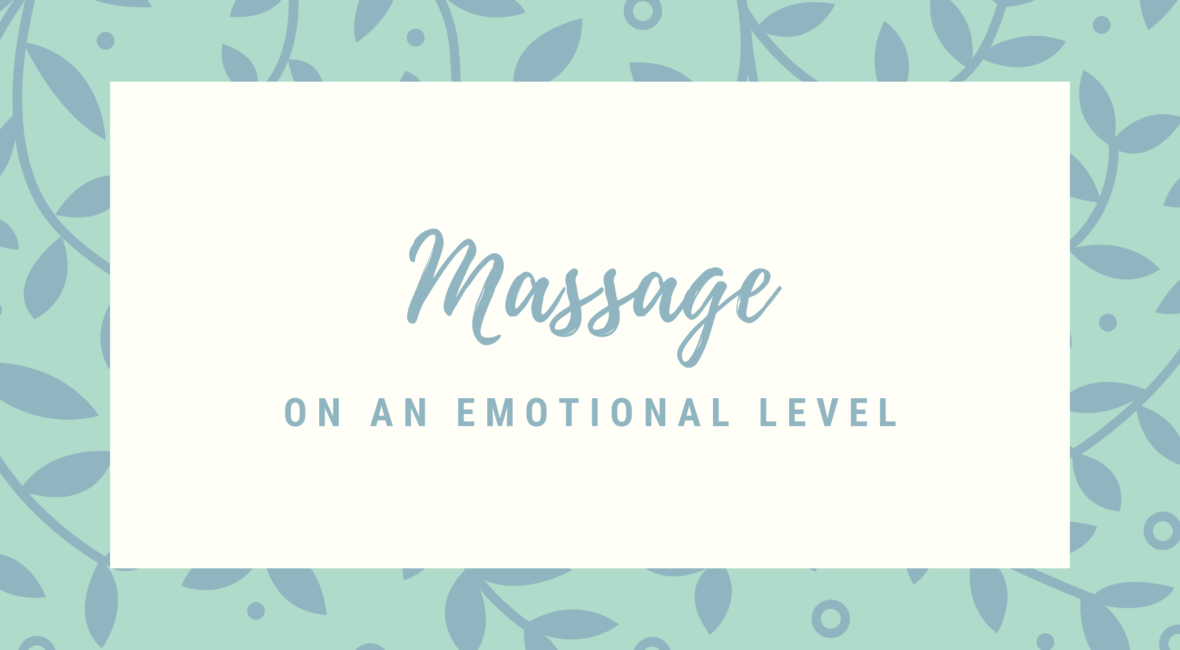
There are two popular styles of massage therapy, both of which have a place in your everyday life: (1) Relaxation massage, which is generally used when one is feeling stressed from work or family life, or overwhelmed by a hectic schedule and is often what people receive when they participate in a “spa day”; and (2) Therapeutic aka Deep Tissue massage, which is used to help people work through and heal from injuries, conditions, and dysfunctions. Despite their differences, both types of massage therapy can elicit an emotional response.
During a massage treatment, muscles and tissues release on an emotional level in a similar fashion as when releasing physical tension. This release can be revealed in a number of ways such as – a sigh, laughter, muscle twitching and even tears. With each touch, emotions related to that touch get stored in our mind, but also the tissues in our body. We store emotions of pleasure and happiness, and also those associated with stress and fear. Those stored experiences can present as healthy, functioning muscles and joints; or manifest negatively in the form of bad posture, aches, and pains. Common areas where emotions and stress are held in the body include the neck and shoulder regions, as well as the hips, so it is not surprising that particular stretches and yoga positions designed to target those areas may also elicit an emotional response commonly encountered during massage therapy.
The safe and nurturing space of a therapy room provides an ideal environment for individuals to lower their emotional or physical defences, making the occurrence of an emotional release quite common. Often such a release manifests while having the treatment done on a body part where you hold the memory of a physical or emotional trauma. This is because the body remembers what the mind chooses to bury deep in the subconscious. For example, if the body is holding a memory of a trauma long forgotten, relaxation can allow that memory and associated emotions to surface as you become more connected to your body and give yourself permission to let go of those emotions.
Such emotional releases can be unnerving, when massage therapy triggers feelings such as anxiety, fear, anger or other negative emotions, it can leave you feeling vulnerable and confused. It is important that you know your RMTs are accustomed to emotional releases from clients and have been trained to help you feel safe and supported when they happen. If you find yourself having an emotional release, let your therapist know and together the two of you can decide how to proceed. It’s important that you know your massage therapy treatment can be stopped or modified at any time.
Emotional releases during bodywork are not unusual and can be a natural and beneficial part of the purifying and renewing process that massage therapy embodies. Through the release of body and muscle tension, RMTs encourage you to surrender negative emotions that you may be holding, but this release is as much physical as mental. After a massage appointment, regardless of the style, you may feel much lighter physically and emotionally. Research has shown that massage therapy can increase the production of endorphins, known as your body’s natural “feel-good” chemical, as well as serotonin and dopamine, which help foster a feeling of calm relaxation following a treatment.
As human beings, we often shun negative emotions and instead store them as tension in our joints and tissues. Understanding how massage therapy and your RMT can help you process and release these feelings is an essential component in looking after the well-being of both your body and mind.
If you have any questions, feel free to drop them in a comment below…
Take care,
xoxo Amy







